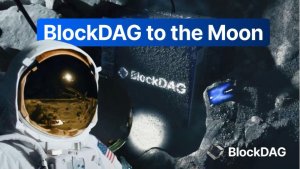What do traders want from their trading system, and how can FX firms provide it? FinanceFeeds investigates
“When money’s tight and hard to get and your horse has also-ran, when all you have is a heap of debt a pint of plain is your only man” said Brian O’Nolan in his famous poem “The Workman’s Friend” many years ago. Referring to horse racing, the term also-ran was used to define a horse that finishes […]

“When money’s tight and hard to get and your horse has also-ran, when all you have is a heap of debt a pint of plain is your only man” said Brian O’Nolan in his famous poem “The Workman’s Friend” many years ago.
Referring to horse racing, the term also-ran was used to define a horse that finishes a race but that does not finish among the money winners.
In today’s globalized and online world of electronic trading, those wishing to make a gain from an investment by using sophisticated techniques and systems to navigate the currency market and predict which currency to buy and sell against other pairs bears little resemblance to the predictions which took place on the verdant grasslands of Ireland during the horse racing heydey that Brian O’Nolan refers to fondly.

Indeed, today, retail FX traders, many of which do not trade as a main occupation, have far more to bear in mind when engaging with the markets than anyone did 10 years ago, let alone in the time when the phrase ‘also-ran’ was coined.
Research conducted by FinanceFeeds has demonstrated that the phenomenon which marketing executives refer to as ‘value proposition’ or USP (unique selling point) is one of the greatest considerations among retail brokerages who are constantly engaged in ensuring that their operating costs remain low in these times of narrow margins and high marketing costs, as well as being able to not just differentiate themselves from the large number of competitors but to be able to stand their user experience out, to avoid falling into that somewhat taboo category of also-rans.
Catch 22 – but you can try to catch more!
This is where a dichotomy exists.
Very simply, it costs a fortune to develop a unique proprietary system which ultimately gets traders used to a certain environment in order that they remain loyal.
Yes, traders may remain loyal to developers of proprietary platforms and an ancillary software ecosystem may eventually be designed around such platforms, however the cost of development is very high indeed – in some cases over $100 million plus monthly operating costs.
Bearing in mind the low spreads and high customer acquisition costs that are constantly on the mind of every executive in the retail FX sector, and it becomes clear that only very well established companies can entertain the thought of platform development, using capital as a write-down.
Here is the math:
Average deposit size for retail clients globally (Inc North America): $6600 in 2015.
Average development cost of proprietary platform: $50 to $100 million.
Average support and R&D costs for proprietary system: $100,000 per month
Average client acquisition cost: $850 to $1300.
Average cost per day of external compliance consultants: Day rates between $1000 and $1600.
Cost of rent of office space in London or New York: £55.34 per month per square meter in 2015 (London City or Canary Wharf) according to real estate firm Savills, and remarkably in Midtown Manhattan the average sale price per square foot in the third quarter of 2013 was $693.00, a 21% increase from 2012, New York having experienced a boom which still exists. Rental per square meter is approximately $51 per month in Downtown Manhattan (FinanceFeeds research).
Quite simply, before bearing in mind regulatory capital requirements, staff salaries and sales bonuses, the cost of merchant services providers (Visa and Mastercard) and the cost of paying revenue share to introducing brokers, a large number of long term clients would have to be onboarded to justify such outlay, hence most long-established brokers with vast capital bases and a diversified product range can afford to write down these costs, and the small to medium sized firms take a much less labor intensive and resource hungry route.
Bearing in mind the same metrics, a firm can take a MetaTrader 4 white label license for $5000 and away they go.
Simple? Not really.
Like everything that appears to be an instant solution, going the white label route is a very practical method of operating without the risk or costs of inhouse design and maintenance. Also, renting offices outside of London or New York is another method, however how many electronic trading firms are there in the northern former industrial heartlands of Britain’s manufacturing era Barnsley or Macclesfield, and how many in Huntsville, Alabama or Kalispell, Montana?
Despite office space and salaries being a fraction of what they are in London or New York in provincial towns, and today’s low-latency connectivity with points of presence, colocation and VPS solutions within reach of all participants, as well as the rootless nature of an online business, absolutely no company makes the move outside of the financial capitals.
Operating in densely competitive areas with a similar system – there are 1,231 active MetaTrader 4 brokerages in existence today, has created a difficulty for firms to retain customers and distinguish themselves above each other.
Today, FinanceFeeds spoke to Michael Chai, CEO of Blackwell Global who explained “Blackwell Global has invested strongly in building relationships from the ground up, be it in China or anywhere else we conduct business in. One aspect that is much valued by our partners is our customized solutions.”
“With our flexible business model, we are able to cater to the individual demands and expectations of our clients. It takes a lot of effort and patience, but it has paid off” he concluded.
Blackwell Global has for many years been one of the most successful brokerages in engaging introducing brokers in China, having gone down the route of developing a network of introducers rather than conduct digital marketing campaigns. This is evident in its distribution, the vast majority of its client base being located in mainland China.
On the other hand, there are companies such as iFOREX and Plus500.
Very rarely are these two companies regarded as stablemates, but there are great similarities in their business models.
Plus500 is is a company whose digital marketing expertise has led to a lean operation which employs no sales staff, yet the company has a market capitalization of £660.23 million, which is almost $1 billion.
Such is the magnitude of this particular example of a low-touch business model, that operating expenses and client acquisition costs are some of the lowest in the industry, and risk of withdrawal is also relatively low because the company does not maintain relationships with its clients, meaning that it onboards several small deposits rather than the high touch model which is expensive and bears the risk of a high net worth trader making a large withdrawal which affects assets under management as well as trading volume.
iFOREX, which is not a publicly listed company, also operates a very small sales department but is a master at digital marketing, to the point that it is a very quiet company that is never the subject of news, product launches or platform innovation, yet has an annual revenue of $100 million as a result of its very keen media buying strategy which the company continually optimizes to reduce the cost of marketing via banner advertisements and concentrates on the creatives which produce good results.
Indeed, innovation is the key to the future within this ever-evolving and highly sophisticated industry, however, there are ways to stand out and prosper which may appear unorthodox and are not the center of attention within the retail sector, and which differentiate their offerings via means that are often overlooked. Go figure!









